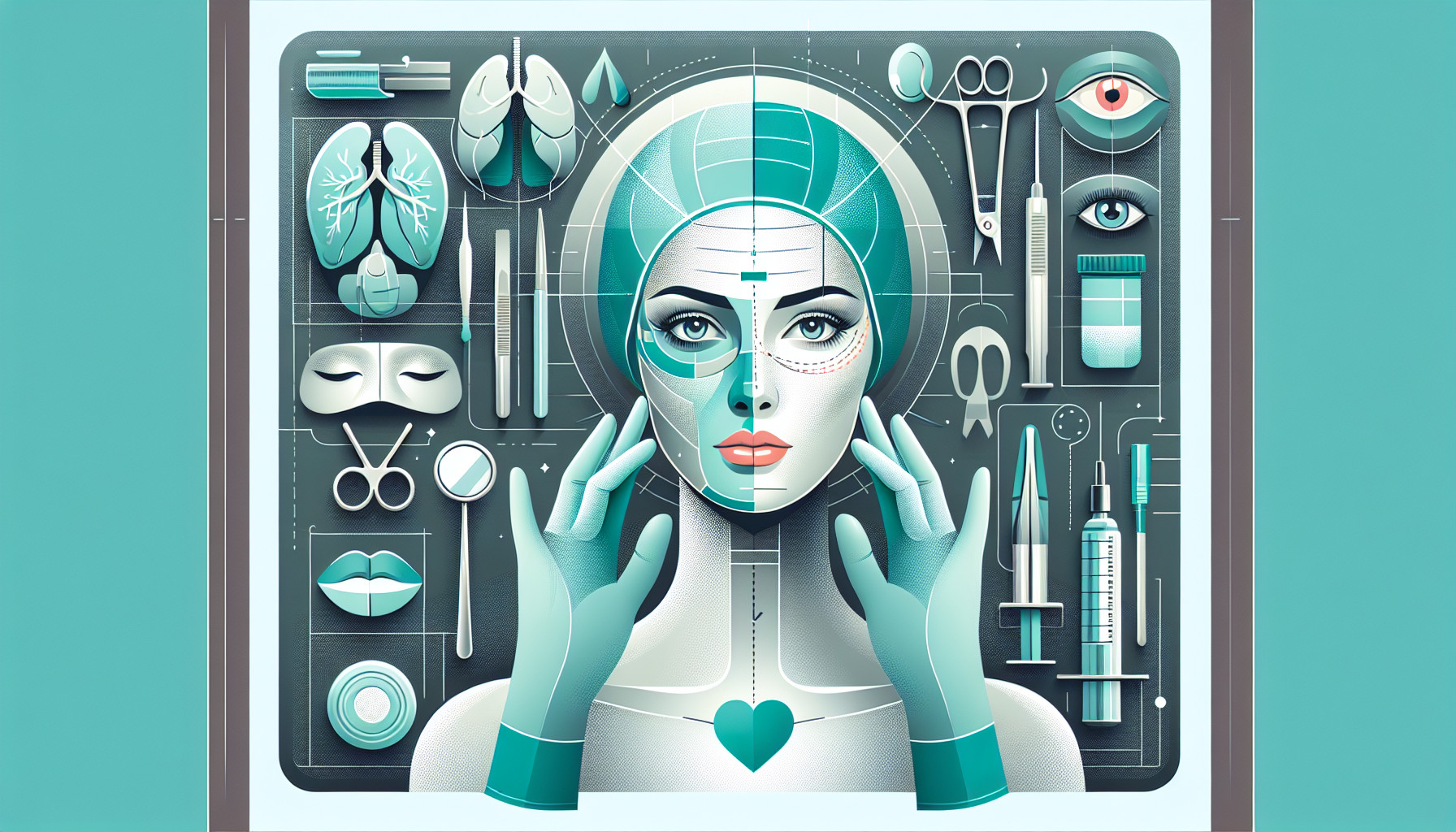Our Summary
This research paper is about a cosmetic surgery called lower eyelid blepharoplasty, which is a procedure to improve the appearance of the lower eyelids. This operation is different and more complex than the similar surgery for the upper eyelids, as it involves more complicated anatomy and varies more between patients due to different aging processes. Also, because patients pay for this operation themselves, they often have high expectations.
The success of the surgery relies on the surgeon having a deep understanding of the eyelid’s structure and the changes it undergoes with aging, in addition to clear communication with the patient about what they can realistically expect from the procedure. The paper reviews the anatomy and aging process of the lower eyelids, the common surgical techniques used, and the usual complications that can occur. It also suggests ways to avoid these complications to ensure both the patient and the surgeon have a positive experience.
FAQs
- What is the difference between lower eyelid blepharoplasty and similar surgery for the upper eyelids?
- What factors contribute to the success of a lower eyelid blepharoplasty procedure?
- What are the common complications that can occur with lower eyelid blepharoplasty and how can they be avoided?
Doctor’s Tip
One helpful tip a doctor might tell a patient about blepharoplasty is to follow all pre-operative and post-operative instructions carefully. This can include avoiding certain medications that can increase the risk of bleeding, quitting smoking to improve healing, and keeping the eyes clean and protected after surgery. By following these instructions, patients can help ensure the best possible results and minimize the risk of complications.
Suitable For
Typically, patients who are recommended for lower eyelid blepharoplasty are those who have:
- Excess skin and wrinkles on the lower eyelids
- Under-eye bags or puffiness
- Drooping lower eyelids that make them look tired or older
- Hollowing or sunken appearance of the lower eyelids
- Difficulty applying makeup due to the appearance of the lower eyelids
It is important for patients to have realistic expectations about the outcome of the surgery, as the goal of lower eyelid blepharoplasty is to improve the appearance of the lower eyelids, not to completely eliminate all signs of aging. Patients should also be in good overall health and have no underlying medical conditions that could affect the healing process.
Ultimately, the decision to undergo lower eyelid blepharoplasty should be made in consultation with a qualified and experienced plastic surgeon who can assess the individual patient’s needs and goals, and recommend the most appropriate treatment plan.
Timeline
Before the surgery:
Initial consultation: The patient meets with the surgeon to discuss their concerns, goals, and expectations for the surgery. The surgeon evaluates the patient’s eyelids and overall health to determine if they are a suitable candidate for blepharoplasty.
Pre-operative assessments: The patient undergoes various medical tests and assessments to ensure they are fit for surgery. They may also be advised to stop smoking and avoid certain medications that can increase the risk of complications.
Surgical planning: The surgeon develops a personalized surgical plan based on the patient’s anatomy and desired outcomes. They discuss the details of the procedure, including potential risks and complications, with the patient.
During the surgery:
Anesthesia: The patient is given either local anesthesia with sedation or general anesthesia to ensure they are comfortable and pain-free during the surgery.
Incisions: The surgeon makes small incisions along the lower eyelid crease or inside the lower eyelid to access the underlying tissues. They may remove excess skin, fat, or muscle, or reposition them to achieve a more youthful appearance.
Closure: The incisions are closed with sutures or tissue glue, and the patient’s eyelids are bandaged to support the healing process.
After the surgery:
Recovery: The patient is monitored in the recovery room before being discharged home. They are advised to rest, avoid strenuous activities, and follow post-operative care instructions to promote healing and reduce swelling and bruising.
Follow-up appointments: The patient returns to the surgeon for post-operative check-ups to monitor their progress and address any concerns. The surgeon may remove stitches, prescribe medications, or recommend additional treatments to optimize the results of the surgery.
Results: Over time, the patient’s eyelids will heal and gradually reveal the final outcome of the surgery. They may experience improved eyelid contour, reduced wrinkles, and a more refreshed appearance that boosts their confidence and satisfaction with the procedure.
What to Ask Your Doctor
- What are the specific concerns or issues with my lower eyelids that make me a good candidate for lower eyelid blepharoplasty?
- What are the potential risks and complications associated with this procedure, and how often do they occur?
- What type of anesthesia will be used for the surgery, and what should I expect during the recovery process?
- How long will the results of the surgery last, and will I need additional procedures in the future to maintain the results?
- Can you show me before and after photos of previous patients who have undergone lower eyelid blepharoplasty?
- What is your experience and expertise in performing lower eyelid blepharoplasty, and how many procedures have you performed?
- What is the cost of the procedure, and does it include follow-up appointments and any potential revisions that may be needed?
- How soon after the surgery can I return to work and resume normal activities?
- Will there be any scarring or visible signs of the surgery, and how can I minimize them?
- What are the realistic expectations I should have for the results of the surgery, and are there any non-surgical options that may be more suitable for my concerns?
Reference
Authors: Moisseiev E, Loewenstein A. Journal: Harefuah. 2024 May;163(5):315-320. PMID: 38734946
